
Die Fledermaus is an operetta composed by Johann Strauss II to a German libretto by Karl Haffner and Richard Genée, which premiered in 1874.
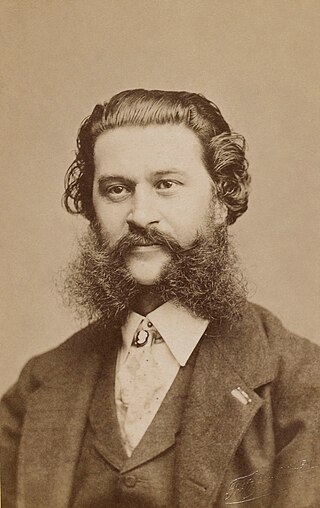
Johann Baptist Strauss II, also known as Johann Strauss Jr., the Younger or the Son, was an Austrian composer of light music, particularly dance music and operettas as well as a violinist. He composed over 500 waltzes, polkas, quadrilles, and other types of dance music, as well as several operettas and a ballet. In his lifetime, he was known as "The Waltz King", and was largely responsible for the popularity of the waltz in Vienna during the 19th century. Some of Johann Strauss's most famous works include "The Blue Danube", "Kaiser-Walzer", "Tales from the Vienna Woods", "Frühlingsstimmen", and the "Tritsch-Tratsch-Polka". Among his operettas, Die Fledermaus and Der Zigeunerbaron are the best known.
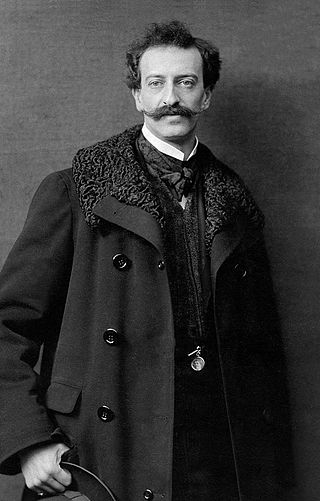
Oscar Nathan Straus was a Viennese composer of operettas, film scores, and songs. He also wrote about 500 cabaret songs, chamber music, and orchestral and choral works. His original name was actually Strauss, but for professional purposes he deliberately omitted the final 's'. He wished not to be associated with the musical Strauss family of Vienna. However, he did follow the advice of Johann Strauss II in 1898 about abandoning the prospective lure of writing waltzes for the more lucrative business of writing for the theatre.
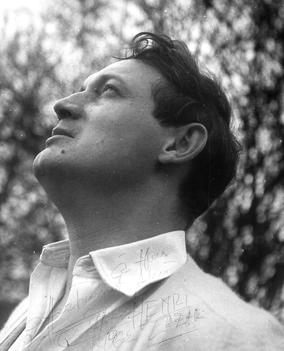
Christian Georges Cziffra was a Hungarian-French virtuoso pianist and composer. He is considered to be one of the greatest virtuoso pianists of the twentieth century. Among his teachers was Ernő Dohnányi, a pupil of István Thoman, who was a favourite pupil of Franz Liszt.

The Kuss-Walzer, Op. 400 is a waltz by Johann Strauss II composed in 1881. The waltz was originally dedicated to his second wife, Angelika Dittrich (1850–1919), but Strauss withdrew that dedication after their divorce in 1882. The waltz comprises melodies from Strauss' popular operetta Der lustige Krieg and is an orchestral treatment of the act 2 aria "Nur für Natur" which was a hit when first performed. Eduard Strauss, the composer's brother, first conducted the orchestral piece at the Court Ball in Vienna in 1882.
Cagliostro-Walzer op.370 is a waltz by Johann Strauss II composed in 1875 based on themes from his operetta, Cagliostro in Wien which premiered on 27 February 1875 at the famous Theater an der Wien.

Rosen aus dem Süden, Op. 388, is a waltz medley composed by Johann Strauss II in 1880 with its themes drawn from the operetta Das Spitzentuch der Königin. Strauss dedicated the waltz to King Umberto I of Italy.

The Gypsy Baron is an operetta in three acts by Johann Strauss II which premiered at the Theater an der Wien on 24 October 1885. Its German libretto by Ignaz Schnitzer is based on the unpublished 1883 story Saffi by Mór Jókai. Jokai later published a novel A cigánybáró in 1885 using an expanded version of this same story.
Künstlerleben, Op. 316 is a waltz written by Johann Strauss II in 1867, following closely on the success of the popular "The Blue Danube". Austria was severely shaken the previous year 1866 by the crushing defeat that the Austrian army suffered in the Battle of Königgrätz and many of the year's festivities and balls were cancelled as the prevalent depressing mood affected most of Vienna's populace.
Tausend und eine Nacht, Op. 346, is a waltz composed by Johann Strauss II in 1871. The waltz's melodies were drawn from his first operetta, Indigo und die vierzig Räuber. It was his first attempt at ensuring that the more memorable melodies from the stage works would survive obscurity by finding new life as a new orchestral work, a practice which he would retain in future stage works. Such a move would also benefit sheet music publishers who can sell the piano editions of the new works to the public who can readily identify individual music pieces.
Morgenblätter, Op. 279, is a Viennese waltz composed by Johann Strauss II in 1863 and first performed on 12 January 1864 at the Sofiensaal in Vienna. The work's genesis was attributed to the composition of a waltz by Jacques Offenbach later titled "Abendblätter" when Offenbach dedicated his work to the influential Vienna Authors' and Journalists' Association. The association had earlier intended the "Abendblätter" waltz to be played at their Concordia Ball on 12 January 1864.
Lagunen-Walzer (Lagoon-Waltz) op. 411 is a waltz by Johann Strauss II written in 1883. The waltz melodies are drawn from his operetta Eine Nacht in Venedig which was a fiasco when premiered in Berlin on 3 October 1883.

Wiener Blut Op. 354 is a waltz by Johann Strauss II first performed by the composer on 22 April 1873. The new dedication waltz was to celebrate the wedding of the Emperor Franz Joseph I's daughter Archduchess Gisela Louise Maria and Prince Leopold of Bavaria. However, the waltz was also chiefly noted by Strauss' biographers as the début of Strauss with the Vienna Philharmonic Orchestra where for many years, the Philharmonic had dismissed any association with the 'Waltz King' as it had not wished to be associated with mere 'light' or 'pops' music. The festival ball celebrating the event was held at the Musikverein Hall which is the venue for the present day Neujahrskonzert.

"Frühlingsstimmen", Op. 410 is an orchestral waltz, with optional solo soprano voice, written in 1882 by Johann Strauss II.
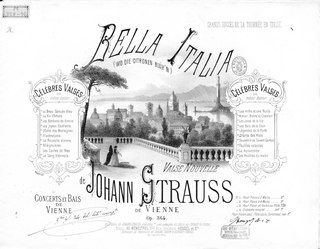
"Wo die Zitronen blühen", Op. 364, is a waltz by Johann Strauss II written in 1874. The waltz was composed during a tour of the composer in Italy where he travelled with the Langenbach Orchestra of Germany and performed the work at the Teatro Regio in Turin on 9 May 1874.

Franz Friedrich Richard Genée was a Prussian born Austrian librettist, playwright, and composer.

Edmund Samuel Eysler, was an Austrian composer.
Carnevalsbilder, opus 357, is a waltz composed by Johann Strauss II. The waltz is based on melodies from Strauss' operetta Der Karneval in Rom. Strauss conducted its first performance in Vienna on July 9, 1873. Oscar Straus later arranged the second waltz theme of Carnevalsbilder for his operetta Drei Walzer as the soprano aria Ich liebe das Leben.
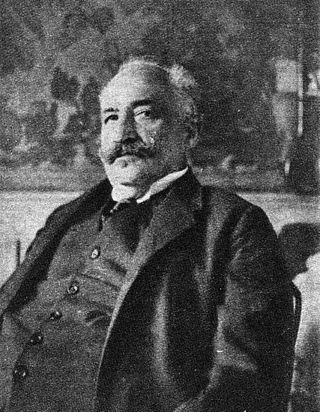
Ignaz Schnitzer was a journalist, translator, librettist and newspaper founder.











